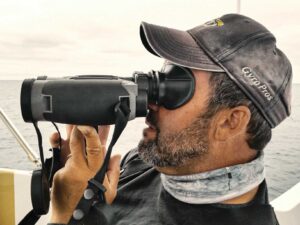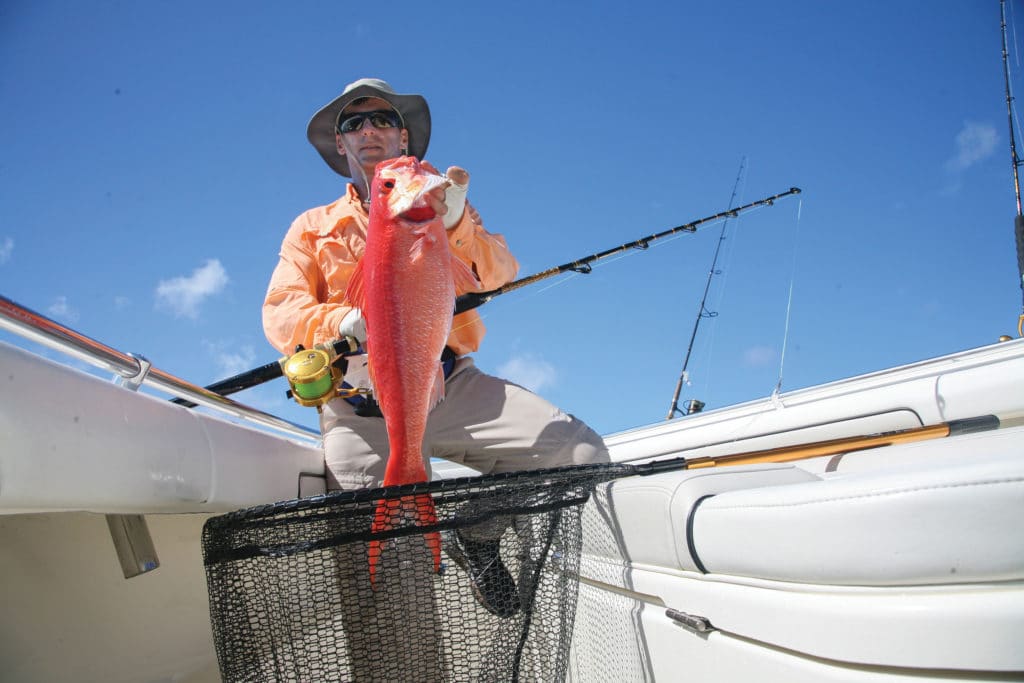
Ask Craig Cushman which frequency you should use for your fish finder, and he will answer with an analogy from the audio entertainment world. As director of marketing for Airmar Technology—today’s leading supplier of transducers compatible with nearly all marine electronics brands—Cushman knows whereof he speaks.
“When a car playing the stereo loudly approaches from a distance, you first hear the low-frequency bass notes, even with the windows rolled up,” he says. “Though you might not discern the melody or lyrics, the low-frequency bass notes boom through at a distance,” he adds. The same principle applies to fish finders: The lower the frequency—say, 40 to 60 kHz—the greater the depth penetration.
Cushman continues the analogy by describing what you hear as the car gets near. “As the car comes closer, you pick up high-frequency treble notes and clearly hear things like the lead guitar and singers,” he says. That also applies to fish finders. The higher the frequency—around 130 to 210 kHz—the greater the ability to pick up and define details.
Guiding Principles
While Cushman’s explanation might seem simple, the principles it illustrates serve as an easy-to-understand primer for new saltwater anglers, and there are more newcomers than ever thanks to a boom in sport-fishing interest spurred by the COVID-19 pandemic.
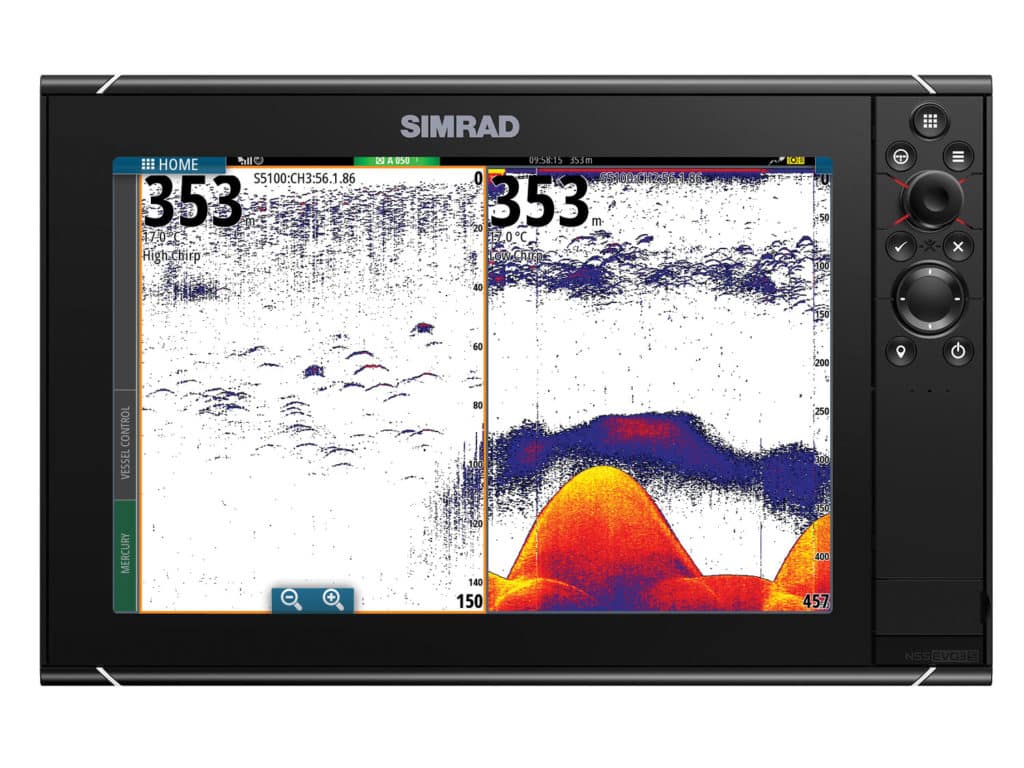
Of course, veteran anglers should also keep this analogy in mind when shopping for a new fish finder or transducer, or venturing outside their comfort zone to try different techniques. Let’s look at how selecting the right frequency helps you find and catch more fish using a transducer in the popular 1,000-watt range.
Going High
“High frequency is better in depths out to about 200 feet,” Cushman says. Though it might not reach as deep as a low-frequency signal, a high-frequency signal better defines bottom structure and fish, letting you precisely position the boat on wrecks, rock piles and ledges; pinpoint productive edges; and determine exactly where fish such as grouper, snapper and rockfish are holding to target them more efficiently.
The downside of high-frequency transducers is that the beam angle is relatively narrow—anywhere from 6 to 12 degrees. As a result, you might not see pelagics in midwater, such as king mackerel, tuna or California yellowtail swimming outside the beam angle.
To help resolve this dilemma, Airmar introduced its B175HW 1,000-watt tilted-element, high-frequency, chirp-ready transducer with a 25-degree beam angle (about $1,300). The wide beam provides twice the coverage and shows excellent fish arches on the display compared to most high-frequency, narrow-beam transducers. It also offers a broad search pattern that lets you see fish and bait you might otherwise miss when looking for fish and structure.
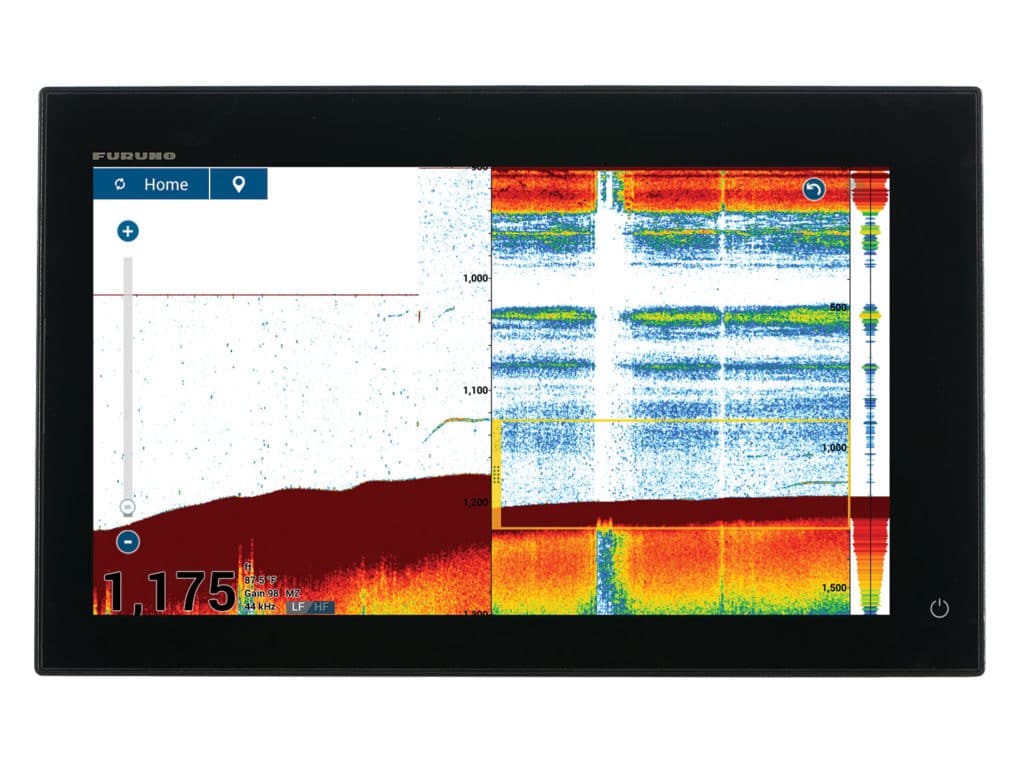
There is, however, one disadvantage to the wider beam angle. The high-frequency energy is more diffused over the wider area, so the edges of structure and fish marks might not be quite as sharp as with a high-frequency transducer with a narrower beam angle.
Going Low
“Low frequency is practical to depths of 2,500 feet,” Cushman says. “Its booming signal makes this a good choice for fishing wrecks in excess of 350 feet, West Coast rockfishing, deep-dropping and daytime swordfishing.” The wider beam angle of a low-frequency model such as the B175L 1,000-watt chirp-ready transducer (about $1,100)—which ranges from 32 degrees at its lowest frequency of 40 kHz to 21 degrees at its highest of 60 kHz—lets you search a wide swath for fish, which proves especially helpful when offshore game like marlin, wahoo and tuna are holding deep.
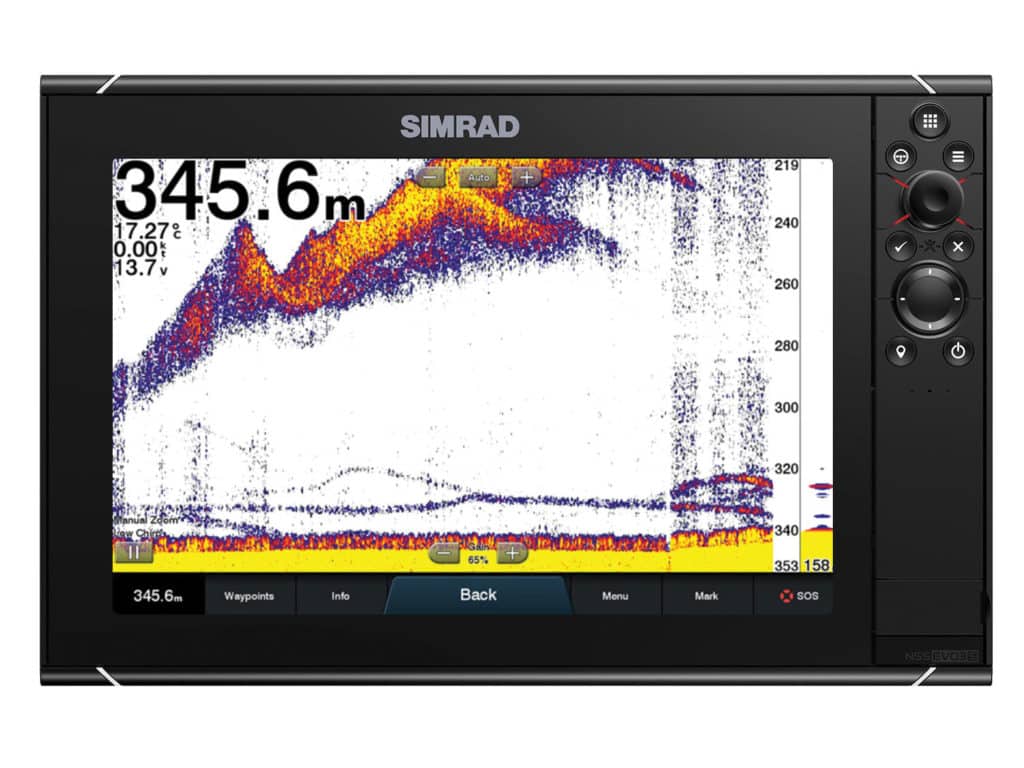
Unfortunately, you probably won’t see the sharper edges of seabed contours, and there might not be enough definition to separate bottom-hugging fish from the ocean floor, Cushman explains.
Happy Medium
For good all-around performance, a medium-frequency transducer strikes a fair balance between a reasonable coverage area, extended depth range, and clean, accurate structure images in middepths to deep water.
A prime example of this is the Airmar TM185M 1,000-watt transom-mount, chirp-ready transducer (about $1,100) that sends and receives signals over a bandwidth of 85 to 135 kHz. “This frequency band is useful when no more than 30 percent of the fishing is focused on structure and the rest is spent fishing the bottom or targets suspended in the water column,” Cushman says. “It’s really versatile and the best choice for applications where only one frequency range can be used.”
Two-in-One
Say that on Saturday you want to fish for mutton snapper on a wreck in 150 feet of water, and deep-drop on Sunday for queen snapper in 1,500 feet. Think you need two transducers—a high and low? Think again.
There’s a number of 1,000-watt transducers that offer both frequencies in one housing. You choose the frequency that suits your needs. A prime example is the TM275LHW chirp-ready, transom-mount model (about $1,400), which is capable of both low- and high-frequency operation. It chirps at 42 to 65 kHz on the low side, and 150 to 250 kHz on the high band.
The high-frequency band has the wider 25-degree beam angle for greater shallow-water coverage. And with a two-channel fish finder, you can use both frequency bands at once to focus on details with the high while searching more widely for fish with the low.
From booming low frequency to detail-defining high frequency, two-in-one transducers help you find structure and fish at just about any depth.
New Electronics
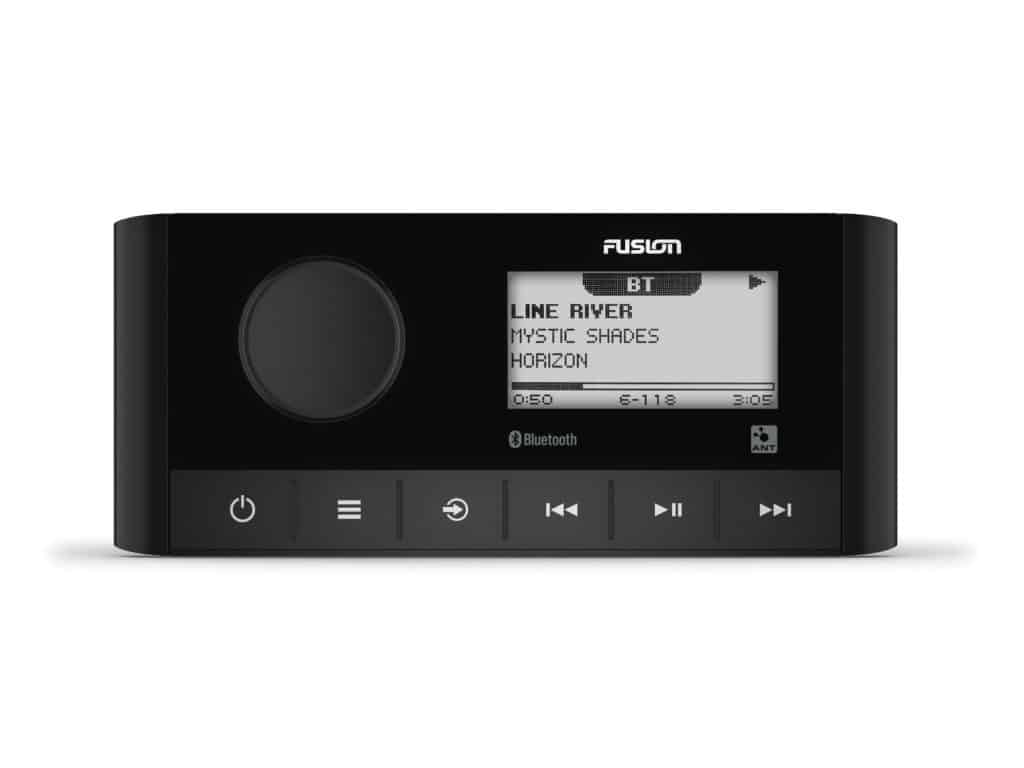
Featuring a compact design with anti-fogging display, the MS-RA60 marine stereo from Fusion Entertainment lets you stream music via Bluetooth with the Fusion-Link app, and allows for wireless control with the ARX70 remote or ANT-compatible smartwatch. There’s volume control for two audio zones, with Class D amplification to power up to four speakers, and a built-in tuner to access a wide range of radio stations. $199.99; garmin.com
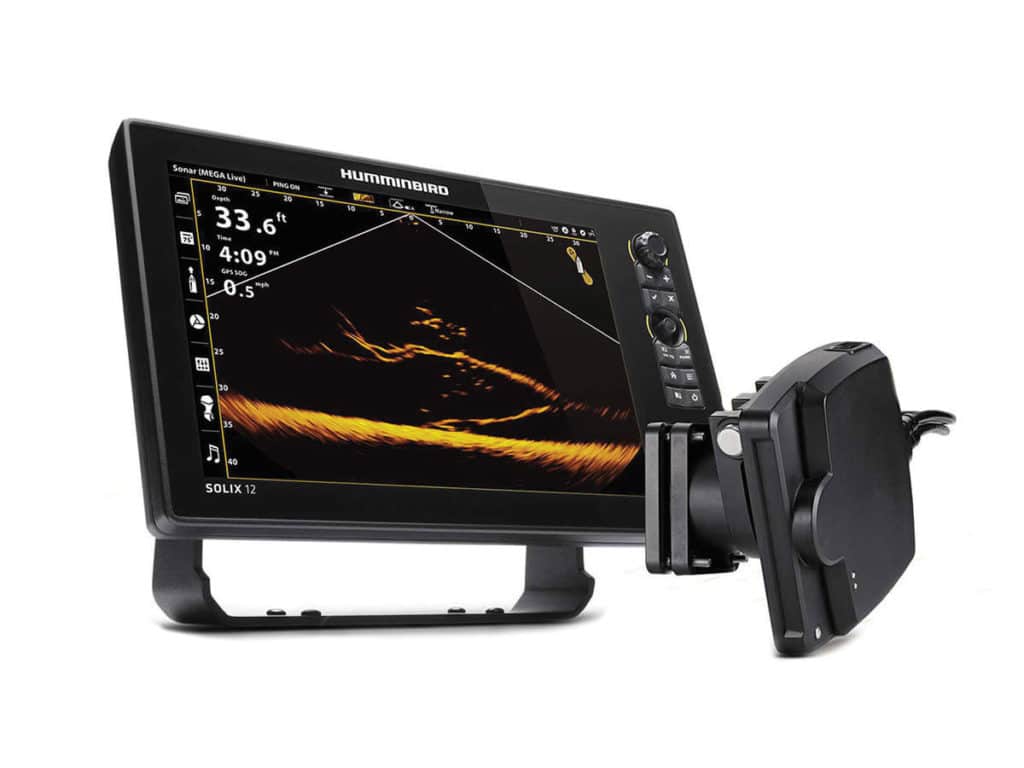
Humminbird’s Mega Live Imaging displays fish onscreen in real time as they move about at ranges of up to 150 feet. The system employs an optional transducer mounted on the shaft of a trolling motor and connects to a compatible Humminbird multifunction display. Mega Live Imaging won the Best Electronics category at the 2021 ICAST fishing-industry trade show. $1,499 for the transducer package; humminbird.com
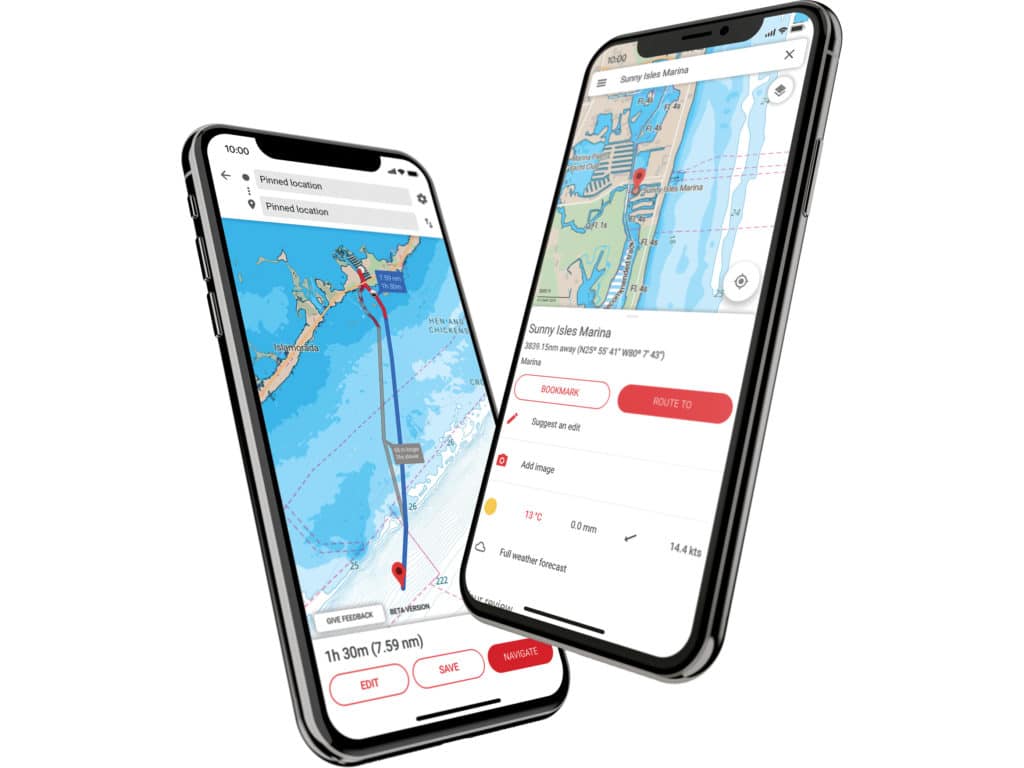
A new app from Simrad’s C-Map charts offers advanced functionality, and mirroring and control of Simrad MFDs from your Android or iOS smartphone or tablet. The app lets you register your Simrad device(s), ensuring you have the latest software, manuals and product tips, plus the ability to sync waypoints and routes. The premium version has additional functions, including stand-alone navigation. Free download; simrad-yachting.com


